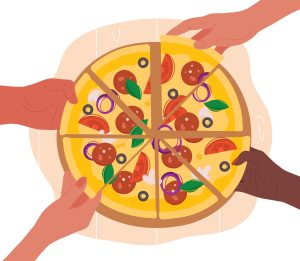Learning about money isn’t just about numbers; it’s about making smart choices to achieve your dreams! One great way to do this is by setting SMART goals. This activity will help your family set goals together, focusing on both money and personal growth. Let’s get started!
What You’ll Need:
- Paper or a whiteboard
- Markers or pens
Steps:
1. What are Goals? Talk about what goals are. Goals are things we want to achieve, big or small, like saving for a new bike or learning a new skill.
2. Introduce SMART Goals: Explain that SMART stands for:
-
- Specific: Be clear about what you want to achieve. Instead of “save money,” say “save $50 for a new video game.”
- Measurable: How will you know you’ve reached your goal? Use numbers, like “save $5 each week for ten weeks.”
- Attainable: Is the goal realistic? Make sure it’s challenging but possible.
- Relevant: Why is this goal important to you? How does it connect to your interests?
- Time-bound: When do you want to achieve your goal? Set a deadline.
3. Brainstorm Goals: Have everyone think of goals they want to achieve. Goals aren’t just for kids. Each person should write down their goals.
4. Choose One Goal: Each person picks one goal to focus on.
5. Make it SMART: Turn each goal into a SMART goal by discussing each part of SMART and writing it down.
6. Create a Plan: Talk about the steps needed to achieve the goal. What actions are needed? Who can help?
7. Track Progress: Decide how to track progress, like using a chart or calendar.
8. Celebrate Success! When someone achieves their goal, celebrate! This helps build positive habits and keeps everyone motivated.
Tips for Different Ages:
- Young Kids (Grades 2-5): Keep it simple and fun. Use pictures or stickers to track progress. Example: “I want to learn to ride my bike without training wheels by practicing 15 minutes three times a week. When I can ride around the block, we’ll celebrate with ice cream!”
- Middle Kids (Grades 6-8): Encourage more complex goals, like saving for something specific. Example: “I want to save $100 for a skateboard by saving $10 each week for ten weeks.”
- Older Kids (Grades 9-12): Focus on longer-term goals, like saving for college or a trip. Example: “I want to save $200 for a school trip by getting a part-time job and saving $50 each week.”
By setting SMART goals together, your family can learn to make smart financial choices and achieve your dreams!








